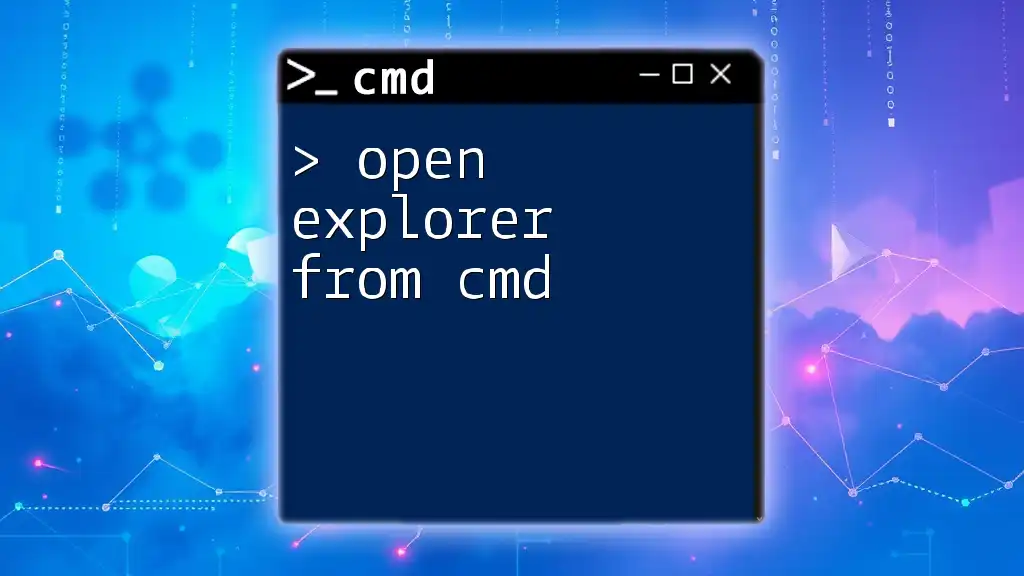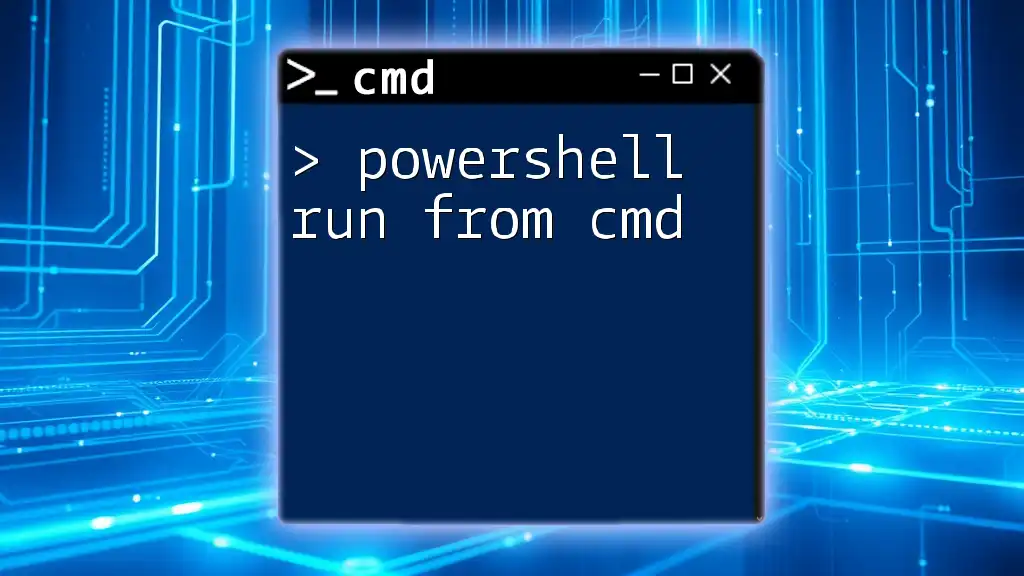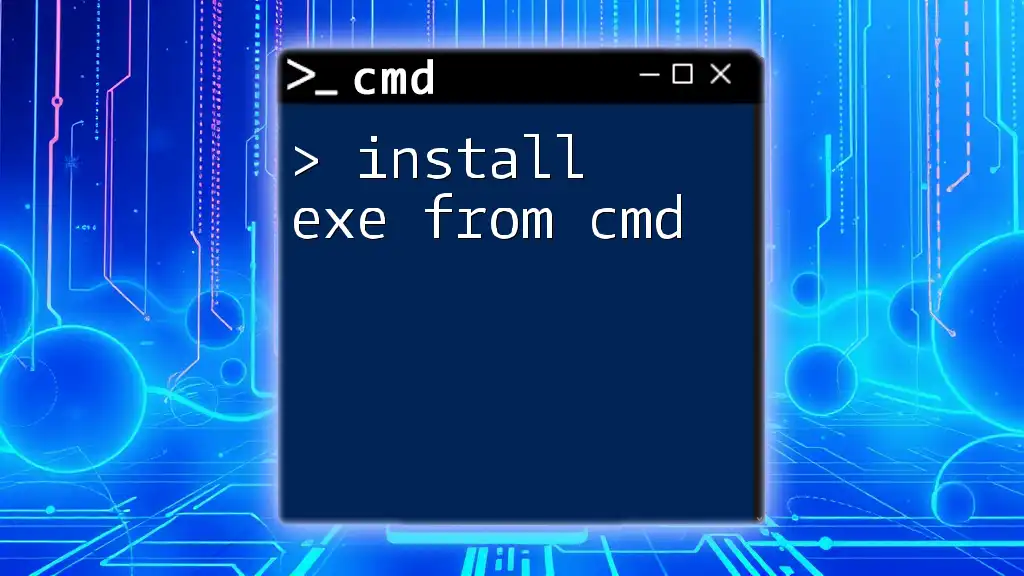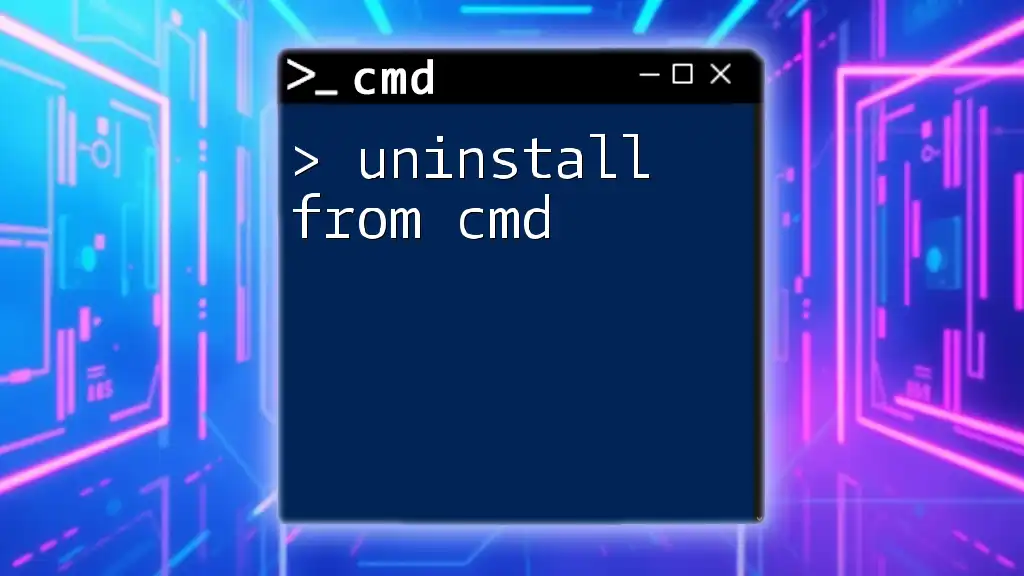To open Windows Explorer from the Command Prompt, simply use the following command:
explorer
Understanding File Explorer
Key Features of File Explorer
File Explorer is a vital tool for navigating and managing files on Windows operating systems. It allows users to browse folders, access files, and perform various file management tasks. Key features include:
- Navigation Pane: A sidebar that provides quick access to your frequently used folders, libraries, and network locations.
- Quick Access: Allows you to pin files and folders for easy access.
- Search Functionality: Quickly find files using the search bar at the top right corner.
By integrating Command Prompt (CMD) with File Explorer, you can streamline your workflows and access locations more quickly than via graphical means alone.
Integrating CMD with File Explorer
Using CMD to open Explorer can save time and provide useful shortcuts. Rather than navigating through various directories in a graphical interface, you can jump directly to the desired folder with a simple command. This is especially beneficial for advanced users who prefer speed and efficiency.
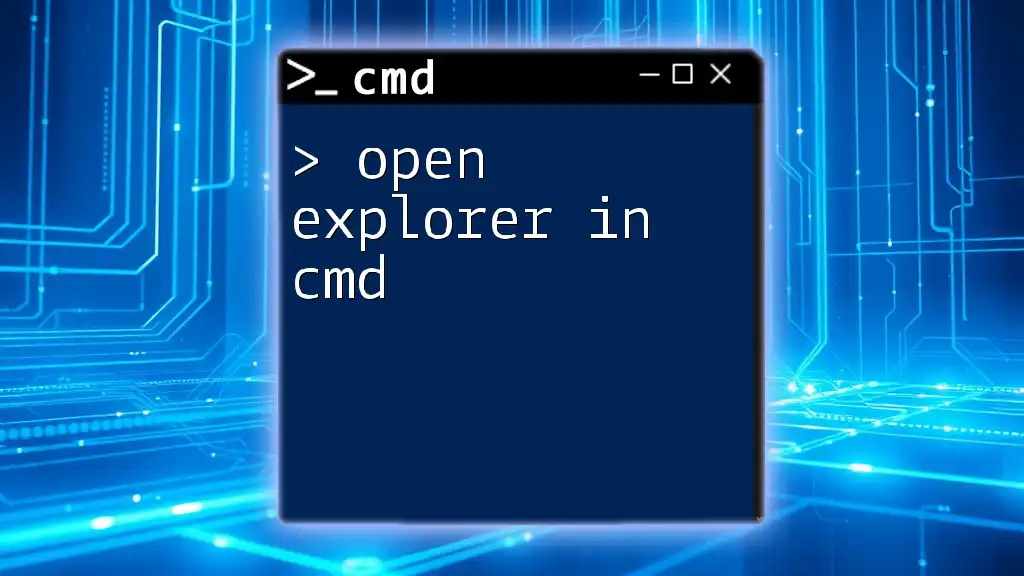
Opening File Explorer Using CMD
Basic Command to Open Explorer
To open Explorer from CMD, you use the straightforward command:
explorer
When executed, this command opens File Explorer in the default view, usually the Quick Access panel. It’s a simple yet effective way to access files quickly.
Opening Specific Folders
If you want to access a particular directory right away, you can specify the path. This command directs Explorer to open a designated folder:
explorer C:\Users\YourUsername\Documents
In the above snippet, replace `YourUsername` with your actual Windows account name. This direct path opens the Documents folder, cutting down the time spent navigating through multiple directories.
Opening Explorer with Administrative Privileges
In certain instances, you may need to run Explorer with administrative privileges, especially if you need to modify system files or settings. To do this, you'll use the `runas` command:
runas /user:Administrator "explorer C:\Windows"
When executed, this command prompts you for an administrator password. Ensure that you enter the correct credentials; once authenticated, Explorer will open the specified path with elevated permissions.
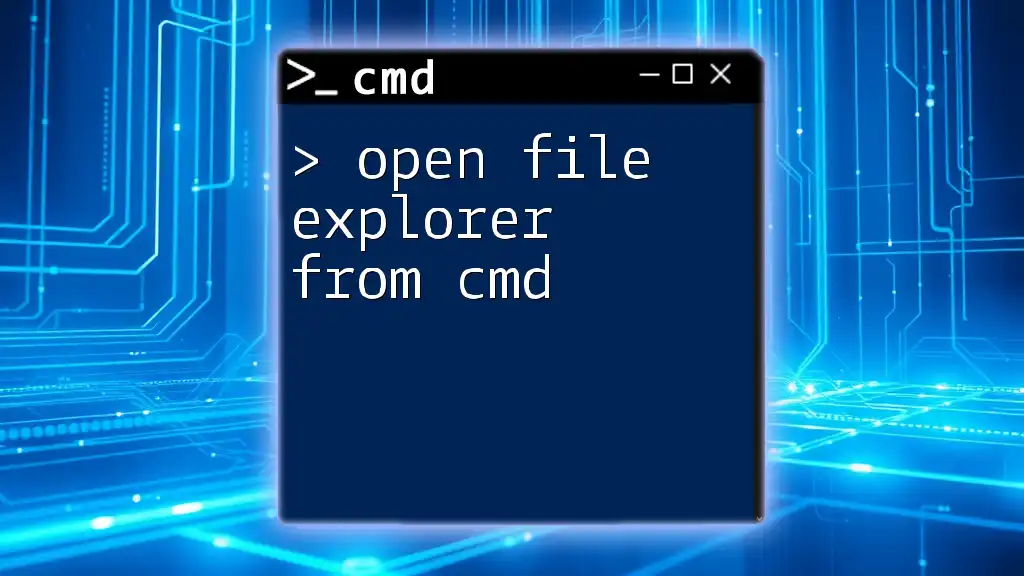
Advanced CMD Commands for Explorer
Opening Explorer with Different Views
Sometimes you might want Explorer to open showing specific files or in a particular view. This can enhance your navigation experience. You can use:
explorer /select,"C:\Users\YourUsername\Documents\file.txt"
In this scenario, Replace "file.txt" with the name of the file you want highlighted. When executed, this command opens Explorer and immediately selects that particular file, saving you time and clicks.
Using Environment Variables
Environment variables are shortcuts that refer to specific directories. Using these can simplify your commands. For example, `%USERPROFILE%` refers to your user folder. You can open the Pictures folder in your profile with:
explorer %USERPROFILE%\Pictures
This command seamlessly opens your Pictures directory, showcasing the utility of environment variables for faster navigation.
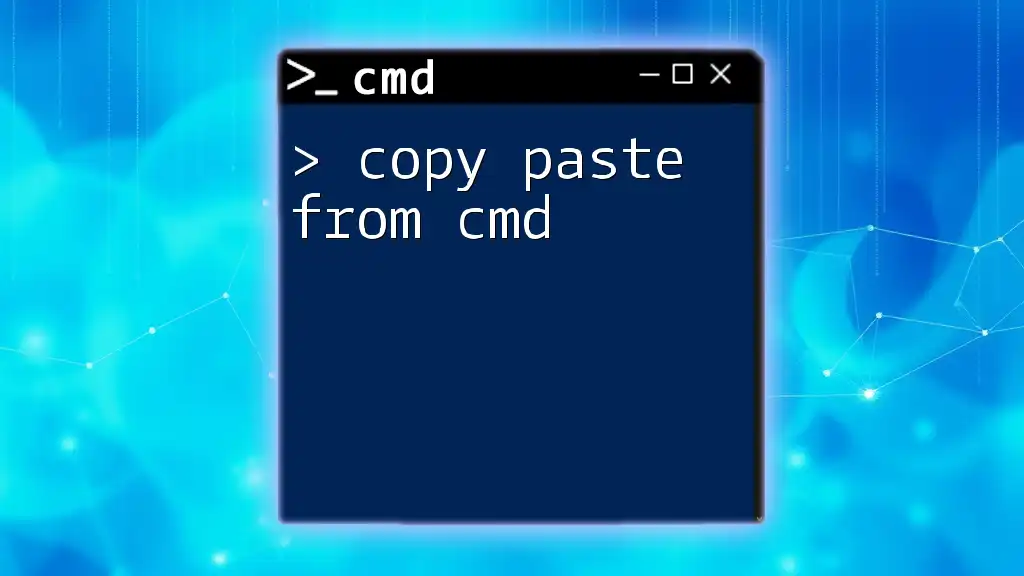
Using Shortcuts with CMD Commands
Creating Custom Commands and Aliases
For frequent tasks, creating custom commands in the form of batch files can be a huge time saver. To do this, create a text file and write the following lines:
@echo off
explorer C:\Path\To\YourFolder
Change `C:\Path\To\YourFolder` to the folder you wish to access. Save the file with a `.bat` extension, and you can run this script anytime to directly open the specified directory.
Keyboard Shortcuts to Enhance Navigation
Another way to enhance your efficiency is by using keyboard shortcuts in conjunction with CMD commands. For example, while in File Explorer, using Alt + F4 closes the window swiftly, and Ctrl + N opens a new window. Pairing these shortcuts with CMD commands maximizes your navigation speed.

Common Issues and Troubleshooting
Problems Opening Explorer from CMD
It’s not uncommon to encounter errors when trying to open Explorer from CMD. Two common issues include:
- Path Not Found: This means you may have mistyped a directory path. Double-check for typos.
- Access Denied: If you’re trying to access a system folder, make sure you have the necessary permissions, or try running as an administrator.
Managing Permissions and Path Accuracy
Always verify that the paths you provide are correct. Use the `icacls` command to check for permissions on files and folders. For example:
icacls "C:\Path\To\YourFolder"
This command will display the current permissions and allow you to manage access rights accordingly.
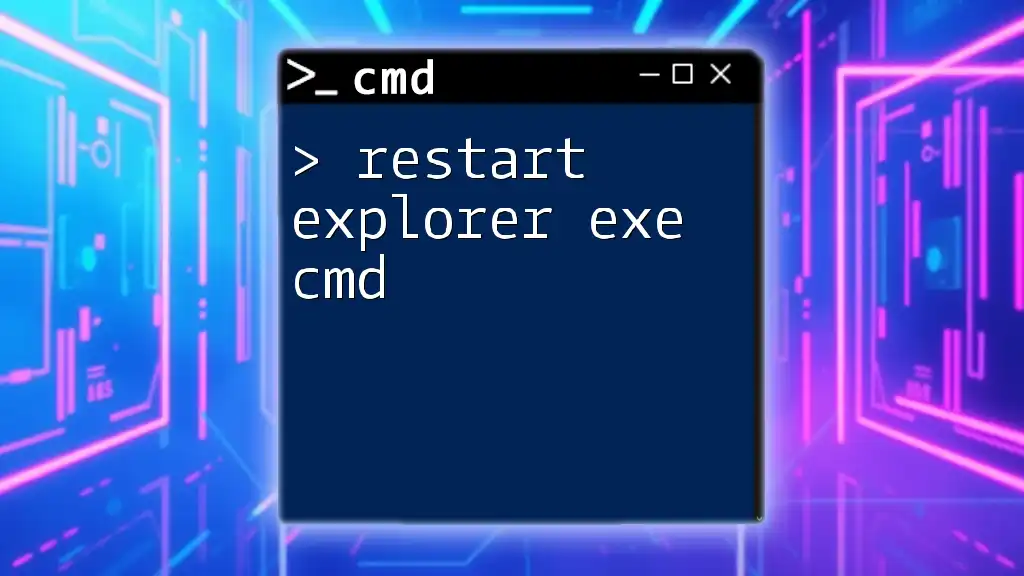
Conclusion
Exploring how to open Explorer from CMD not only equips you with valuable skills but also streamlines your file management tasks. The commands and strategies discussed here provide a foundation for interacting efficiently with Windows file systems. Exploring and practicing these commands will enhance your command line capabilities, making your workflow smoother and faster.
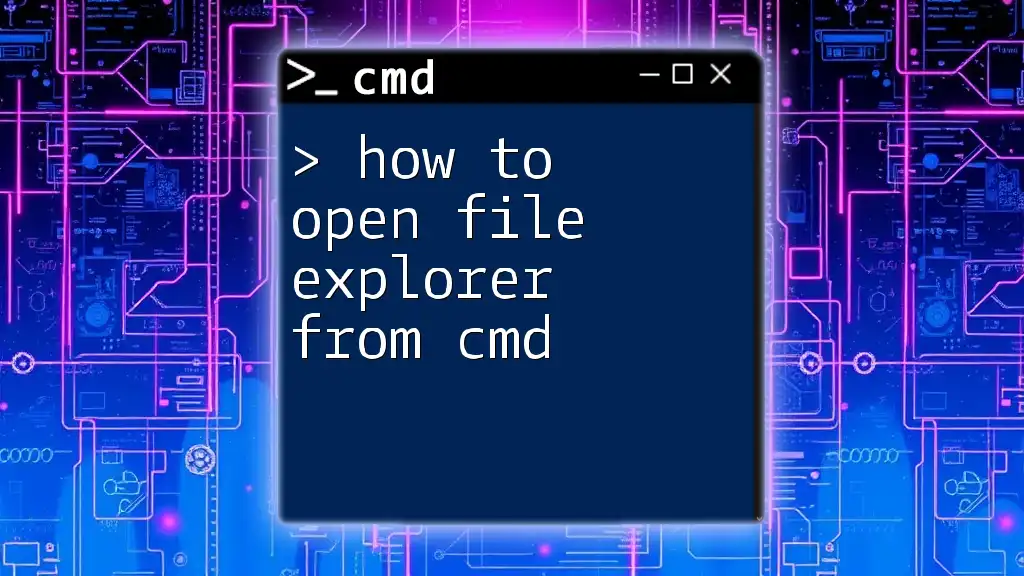
Additional Resources
For further reading, consider diving into resources focusing on CMD commands and File Explorer tips. Forums and online communities can be great places to discover advanced techniques and share personal experiences with other CMD enthusiasts.

